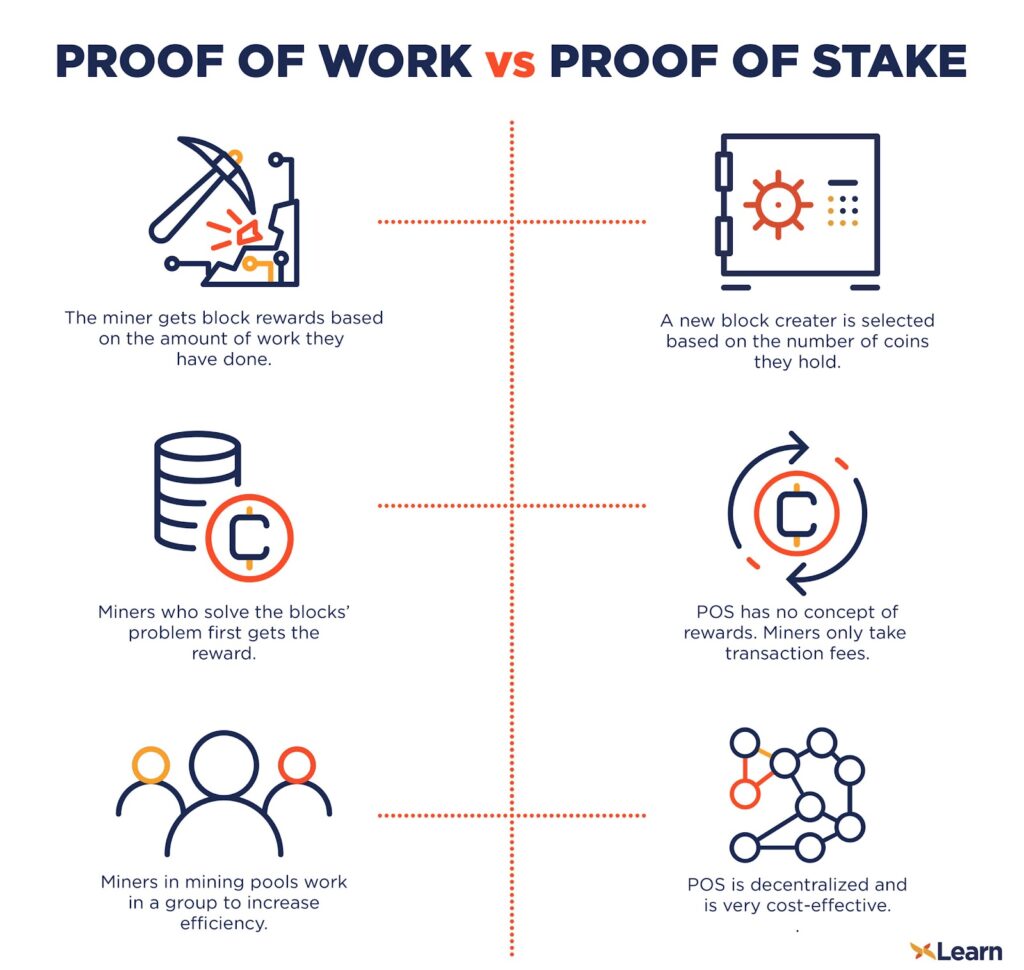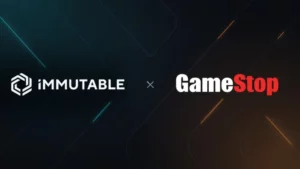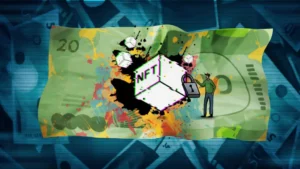- Binance is selling one Terahash per second (Th/s) at $10.7280, split between the hash rate and electricity costs.
- In June 2023, Tether announced its intent to support and provide capital for the Volcano Energy project
- Digital Currency Group revealed the existence of a subsidiary called Foundry that will invest %$100 million into crypto mining.
The Web3 industry has significantly evolved within the past two decades. The industry transitioned from introducing a new financial system to developing decentralized enterprise-level applications. The diverse nature of blockchain technology has allowed developers to step beyond the initial applications of Nakamoto, and now an entire ecosystem is growing, ushering in a new age of technology.
When tracing the roots of most blockchain companies, crypto mining formulated the whole backbone of the ecosystems. The applications of Proof of Work ignited the wave of innovations throughout the ecosystem. Unfortunately, through the wave of progress, crypt mining has significantly lost its charm. Today, crypto miners have dwindled with the changing times as Proof of Work is steadily becoming a legacy consensus mechanism for most blockchain companies.
Despite this steady decline, several figureheads within the ecosystem have taken the initiative to rival the significance of crypto mining. This article will highlight their endeavors to revive the first fundamental concept of the ecosystem.
The fall of crypto mining
Proof of Work was the first consensus mechanism that brought about the age of the web3 industry. It was the backbone behind crypto mining and significantly contributed to the emergence of the industry. Like any other technology-based company, crypto miners found ways to improve the efficiency of the mining process. Soon, developers created hardware specifically designed to ensure efficient and faster mining processes.
Through Bitcoin emerged altcoins, dawning multiple designs. Initially, the POW consensus mechanism was a default component for most blockchain companies that further grew the community. Unfortunately, despite its revolutionary concept, POW had significant flaws.

Proof of Work has steadily become a legacy mechanism alongside crypt mining as new versions aim to replace it like the POS mechanism.[Photo/Changelly]
The amount of energy serves consumed to complete each mining process proved too much. Soon, the entire crypto community faced plenty of legal lawsuits from environmentalists. The excessive mining operations consume significant amounts of electricity, contributing to environmental concerns.
Inoltre, leggi Government’s desperate measures to revive the severed Zimbabwean dollar as the election nears.
It got so bad that multiple blockchain companies sought to develop new consensus mechanisms. Other emerging consensus mechanisms included; Proof of Weight, Prova di autorità, Proof of History, and the more commonly adopted Proof of Stake.
New consensus mechanics mean new and cheaper equipment for crypto miners. On average, standard crypto mining hardware is often expensive. The high initial and maintenance cost caused most within the ecosystem soon turn to crypto trading.
Furthermore, the process of crypto mining creates new tokens within the ecosystem. With the increase in availability, the cost or value of the crypto coin also drops. In addition, several crypto coins have fixed amounts of coins circulating the web3 ecosystem. This means, most crypto miners would only gain from processing transactional blockchains and verifying accounts.
Today, most crypto mining activities are large-scale. This brig upon a more centralized mining system within the web3 ecosystem. Many experts have brought up that the issue of centralized mining systems within a decentralized ecosystem goes against its core goals.
Due to these and other reasons, crypto mining has gradually faded into legacy technology.
Reviving crypto mining activities.
With most blockchain companies shifting into new conses mechanisms, only a few are left that still believe in POW.
Binance, the world’s leading crypto exchange company, recently launched a subscription-based cloud mining service. This new feature became available on 15 June to revive the ecosystem’s former glory.
Binance is selling one Terahash per second (Th/s) at $10.7280, split between the hash rate and electricity costs at $1.17 and $9.558 respectively. The higher the rate, the higher the production rate. They have added that the BTC mining subscription services will be active for six months.
For each hash rate, the user can earn 0.0004338 BTC during the timeline. Binance launched this feature amid the current crisis of crypto lawsuits bombarding the entire web3 ecosystem. Binance has once again proven why it remains at the top of the web3 ecosystem, through its advocacy for crypto mining.
Tether, the leading stablecoin within the web3 ecosystem, presented some interest in reviving crypto mining. With technology moving into renewable energy, Tether took the opportunity to revive the industry by dealing with its high-energy consumption.
Inoltre, leggi Yellow Card collabora con Tether per prendere di mira la gioventù africana.
In June 2023, Tether announced its intent to support and provide capital for the Volcano Energy project. According to the announcements, Tether will establish a Bitcoin mining system that relies on the newly established energy source. Tether aims to play a vital role in establishing the world’s largest Bitcoin mining farm. The project will involve the corporations of El Salvador and Uruguay.
Infine, Gruppo di valute digitali revealed the existence of a subsidiary called Foundry that will invest %$100 million into crypto mining. According to DCG, the Foundry has operated since 2019 and has run crypto mining operations. The profits gained have faced most of its maintenance costs while financing other crypto startups.
Its Bitcoin mining algorithm creates a new math problem every ten minutes, and the current payout for solving on is 6.25 BTC. This unveiling inspired many to enter and participate in the industry. The initiatives of the DCG have expanded the web3 ecosystem in more ways than one.
Conclusione
These three are but a few blockchain companies that have ensured the survival of crypto mining. Unfortunately, those efforts cater to more large-scale services. Finding individual crypto miners is hard given the amount of power many POW consensus mechanisms use.
Several organizations like Foundry took it upon themselves to develop large-scale crypto-mining firms. Some trade their processing power for currency, while others by processing power from stand-alone crypt miners. Either way, the web3 ecosystem still needs crypto miners. Crypto miners may still have value despite the shifting tides.
- Distribuzione di contenuti basati su SEO e PR. Ricevi amplificazione oggi.
- PlatoData.Network Generativo verticale Ai. Potenzia te stesso. Accedi qui.
- PlatoAiStream. Intelligenza Web3. Conoscenza amplificata. Accedi qui.
- PlatoneESG. Automobilistico/VE, Carbonio, Tecnologia pulita, Energia, Ambiente, Solare, Gestione dei rifiuti. Accedi qui.
- Platone Salute. Intelligence sulle biotecnologie e sulle sperimentazioni cliniche. Accedi qui.
- Grafico Prime. Migliora il tuo gioco di trading con ChartPrime. Accedi qui.
- BlockOffset. Modernizzare la proprietà della compensazione ambientale. Accedi qui.
- Fonte: https://web3africa.news/2023/08/18/news/blockchain-companies-work-to-revive-crypto-mining/
- :ha
- :È
- $ SU
- 15%
- 17
- 2019
- 2023
- 25
- 33
- 970
- a
- Chi siamo
- Secondo
- conti
- attivo
- attività
- aggiunto
- aggiunta
- adottato
- patrocinio
- africano
- ancora
- contro
- puntare
- mira
- algoritmo
- permesso
- a fianco di
- anche
- Altcoins
- Tra
- quantità
- importi
- an
- ed
- ha annunciato
- Annunci
- in qualsiasi
- applicazioni
- SONO
- articolo
- AS
- At
- disponibilità
- disponibile
- media
- Spina dorsale
- Vasca
- BE
- è diventato
- diventare
- diventando
- dietro
- CREDIAMO
- fra
- Al di là di
- binance
- Bitcoin
- Estrazione Bitcoin
- blockchain
- aziende blockchain
- La tecnologia blockchain
- blockchains
- portato
- BTC
- btc mining
- ma
- by
- detto
- Materiale
- capitale
- carta
- approvvigionare
- ha causato
- centralizzata
- cambiando
- più economico
- circolante
- Cloud
- CLOUD MINING
- Moneta
- Coindesk
- Monete
- comunemente
- comunità
- Aziende
- azienda
- completamento di una
- componente
- concetto
- preoccupazioni
- Consenso
- meccanismo di consenso
- Meccanismi di consenso
- consumare
- consumato
- consumo
- contribuito
- contribuendo
- Nucleo
- Corporazioni
- Costo
- Costi
- creato
- crea
- crisi
- cripta
- crypto
- Moneta cripto
- Monete Crypto
- comunità crittografica
- Scambio criptato
- Criptovalute
- minatori di criptovalute
- criptazione mineraria
- startup crypto
- crypto trading
- Valuta
- Corrente
- DCG
- trattare
- decenni
- decentrata
- Rifiuta
- Predefinito
- progettato
- disegni
- Nonostante
- sviluppare
- sviluppatori
- in via di sviluppo
- paesaggio differenziato
- Dollaro
- Gocce
- durante
- ogni
- guadagnare
- ecosistema
- ecosistemi
- efficienza
- efficiente
- sforzi
- o
- el
- El Salvador
- Elezione
- elettricità
- emerse
- emersione
- emergenti del mondo
- sforzi
- energia
- garantire
- entrare
- di livello enterprise
- Intero
- ambientale
- preoccupazioni ambientali
- usate
- stabilire
- sviluppate
- stabilire
- Ogni
- si è evoluta
- exchange
- esistenza
- ampliato
- costoso
- esperti
- di fronte
- Autunno
- fattoria
- più veloce
- caratteristica
- pochi
- finanziario
- sistema finanziario
- finanziamento
- ricerca
- Aziende
- Nome
- fisso
- difetti
- Nel
- Ex
- essere trovato
- Fonderia
- da
- fondamentale
- ulteriormente
- Guadagno
- guadagnato
- dato
- Obiettivi
- va
- gradualmente
- è cresciuto
- Gruppo
- Crescita
- ha avuto
- Hard
- Hardware
- hash
- hash rate
- Avere
- Alta
- superiore
- Highlight
- storia
- HTTPS
- competenze
- in
- incluso
- Aumento
- individuale
- industria
- inizialmente
- inizialmente
- iniziativa
- iniziative
- innovazioni
- fonte di ispirazione
- intento
- interesse
- ai miglioramenti
- l'introduzione di
- Investire
- coinvolgere
- problema
- IT
- SUO
- jpg
- giugno
- larga scala
- maggiore
- lanciato
- cause
- principale
- a sinistra
- Eredità
- Legale
- piace
- perso
- manutenzione
- molti
- matematica
- max-width
- Maggio..
- significare
- si intende
- analisi
- meccanica
- meccanismo
- meccanismi di
- milione
- minatori
- Siti di estrazione mineraria
- Hardware di estrazione
- Minuti
- mese
- Scopri di più
- maggior parte
- in movimento
- molti
- multiplo
- nakamoto
- Natura
- esigenze
- New
- recentemente
- adesso
- of
- di frequente
- on
- una volta
- ONE
- esclusivamente
- operato
- Operazioni
- Opportunità
- or
- organizzazioni
- Altro
- Altri
- partecipare
- partner
- passato
- per
- Platone
- Platone Data Intelligence
- PlatoneDati
- Giocare
- Abbondanza
- PoS
- PoW
- energia
- presentata
- Problema
- processi
- i processi
- lavorazione
- Potenza di calcolo
- Produzione
- profitti
- Progressi
- progetto
- prova
- Proof-of-Palo
- dimostrato
- comprovata
- fornire
- tasso
- Leggi
- motivi
- recentemente
- resti
- Rinnovabile
- energia rinnovabile
- sostituire
- rispettivamente
- Rivelato
- ravvivare
- rivoluzionario
- Rivale
- Ruolo
- radici
- Correre
- Salvador
- Secondo
- Vendita
- serve
- servizio
- Servizi
- alcuni
- MUTEVOLE
- significato
- significativa
- significativamente
- da
- SIX
- Sei mesi
- So
- Soluzione
- alcuni
- presto
- ricercato
- Fonte
- in particolare
- dividere
- stablecoin
- palo
- Standard
- Startup
- costante
- step
- Ancora
- sottoscrizione
- servizi di abbonamento
- filiale
- supporto
- sopravvivenza
- sistema
- SISTEMI DI TRATTAMENTO
- preso
- Target
- Tecnologia
- carnagione
- Terahash
- Tether
- TH / s
- di
- che
- I
- L'iniziativa
- loro
- si
- Strumenti Bowman per analizzare le seguenti finiture:
- di
- questo
- quelli
- tre
- Attraverso
- per tutto
- maree
- time line
- volte
- a
- oggi
- Tokens
- pure
- ha preso
- top
- Tracciato
- commercio
- Trading
- transazionale
- vero
- TURNO
- seconda
- purtroppo
- scoprimento
- su
- Uruguay
- uso
- Utente
- APPREZZIAMO
- verifica
- versioni
- importantissima
- vulcano
- Prima
- Wave
- Modo..
- modi
- Web3
- Ecosistema Web3
- Industria Web3
- peso
- while
- tutto
- perché
- volere
- con
- entro
- Lavora
- Il mondo di
- sarebbe
- zefiro













